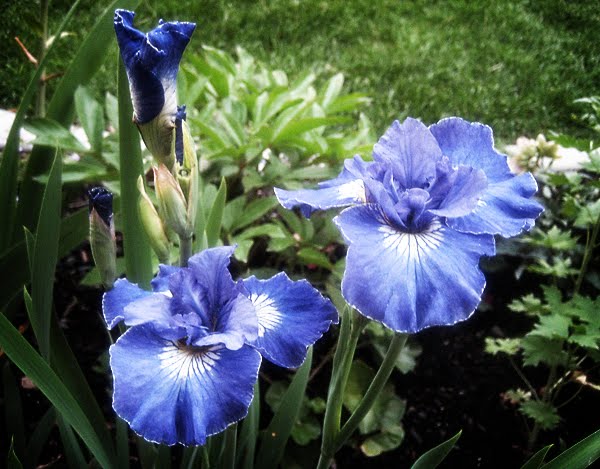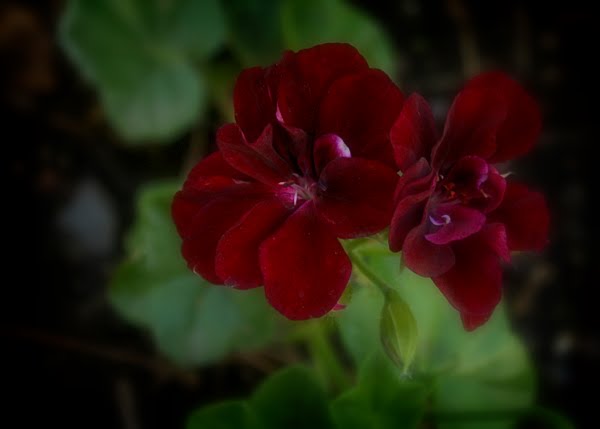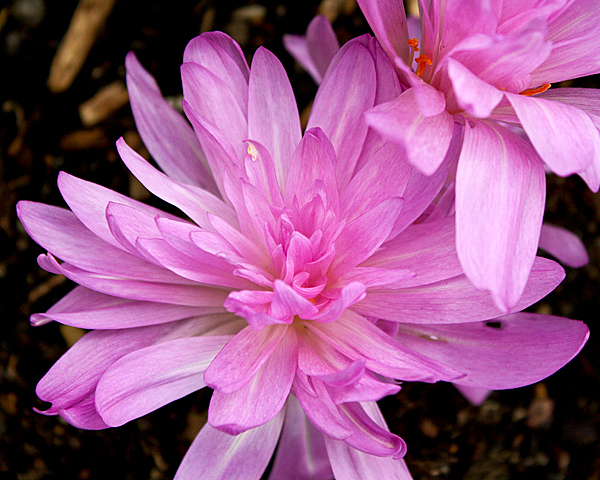
Although I don't often participate in memes or awards, Catmint from Diary of a Suburban Gardener tagged me with Honest Scrap. She was one of the first garden bloggers I met at Blotanical, and I thought it was so cool to have a grardener friend in Australia. I still do. So I'm doing honest scrap but keeping it on topic, relating it to Thanksgiving, and illustrating with some photos from a recent trip to a local nursery. Here are 10 things this gardener is grateful for:

I am thankful . . .
1. That I didn't cut off my fingers while chopping grain corn stalks at the soil and plant analysis lab where I worked during high school. I'm a clutz. I prayed every day that my knife wouldn't slip and remove a finger . . . and I don't have any stubs, thankfully.
2. That I don't work at a nursery anymore (I have worked at two). Steamy summer greenhouses. An aching back from leaning over to pick up pots. Customers who leave their new plants in the garage while they go on vacation for a few weeks - with no water - then want replacements because the poor things died. I have great admiration for nursery owners and employees that put up with all of this to give us great plants.

3. That I discovered the horticulture program at my university. People in accounting or chemistry trudged to class dutifully, but I wanted to skip to my horticulture classes. My degree provided a great foundation for a lifetime of learning about plants and gardening and design.
4. That seeds sprout. I studied the process by which seeds germinate . . . but I still think it's a miracle. What makes a tiny seed decide to grow toward a great potential? There's some inspiration there for us.

5. For friends who tolerate my incessant gardening chatter. And who give me plants sometimes. And who take the plants that don't work in my yard anymore so I don't have to kill them. And who comment on my blog. Love those gardener friends!
6. For many different garden styles to keep things from getting boring. It's great to read about and see the different gardens that people make. I can enjoy them even if the style isn't what I'm going for in my yard.

7. For manure. But if you've read this blog for very long, then you already know that. There's another life lesson here about how the unpleasant parts of life can become fertile soil for growth . . .
8. For a gardening family. Gardening is in my genes from my father and grandmother. My husband digs holes and removes sod. My kids help spread composted manure (my youngest even ate some of it with no ill effects, amazing). I'd love my family if they didn't garden, but it's even better that they do.

9. For blogging friends. How else would I meet passionate, friendly gardeners from all over the world except by blog? I'm thankful for you.
10. And finally, I'm grateful for the beauty of the earth and opportunities to create beauty in gardens. As a Christian, I see the earth as a gift. How wonderful that it provides not only for our basic needs, but that the earth inspires us with its countless beauties.
Happy Thanksgiving to everyone! I'm cooking a 20 lb turkey and fixings, 3 types of pies, and hosting 16 people for the big meal. I hope your day is just as fun (though maybe less hectic) than mine will be!






















